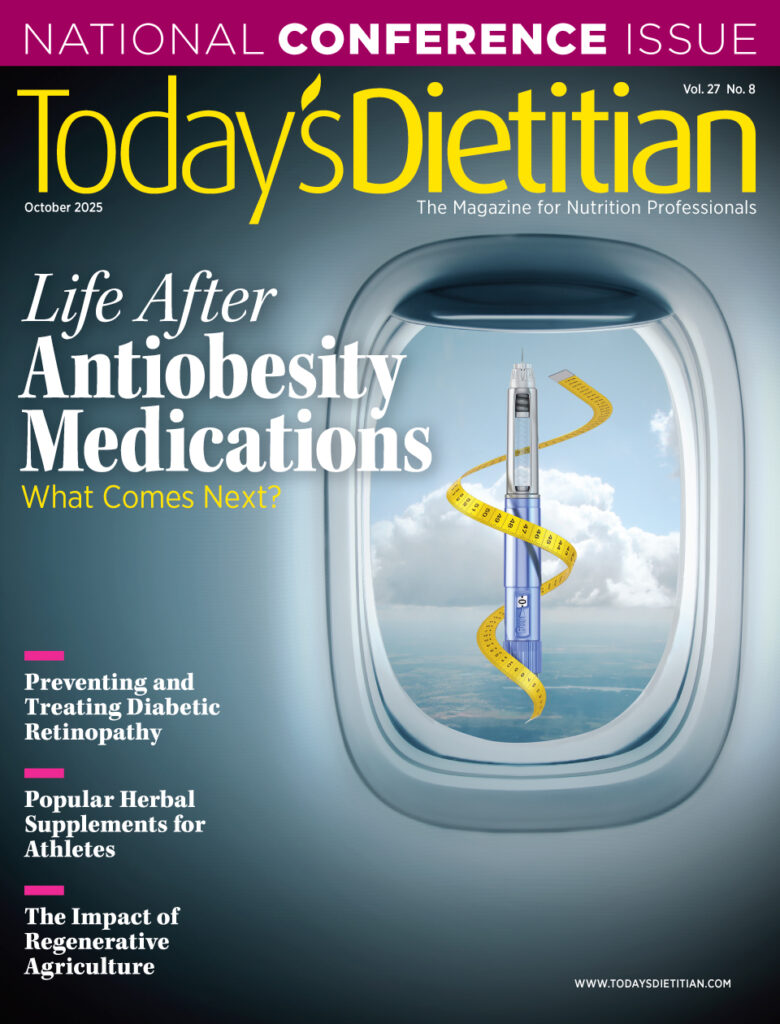Today’s Dietitian
Vol. 18, No. 12, P. 4
Several months ago, my doctor recommended I start taking 1,000 IU of vitamin D3 daily to support bone health. She also said research shows vitamin D may even help prevent breast cancer. I was like, “Wow!” I had heard great things about vitamin D, including its role in preventing diabetes, cardiovascular disease, autoimmune diseases, systemic inflammation, hair loss, and promoting brain health, but I didn’t know it could help prevent breast cancer. Yet, despite her recommendations, I didn’t start supplementing with vitamin D until recently.
I’ve never been tested for a vitamin D deficiency, but I figured I was at least vitamin D insufficient like 50% of all adults worldwide—despite the fact I’m a daily skim milk and cereal eater. However, I’m rarely out in the sun, and I don’t eat many of the vitamin D-rich foods such as cod liver oil, maitake mushrooms, swordfish, and orange juice.
Like the average adult, athletes and active individuals also are at risk of vitamin D insufficiency and deficiency, according to a presentation at the Food & Nutrition Conference & Expo™ in October called “Vitamin D: Friend or Foe?” This session mainly focused on vitamin D insufficiency and deficiency in young adult athletes and the role vitamin D plays in athletic performance, and it provided consumption and supplementation recommendations. What was interesting to me was that reported intake of vitamin D among elite basketball players, college athletes, competitive runners, soccer players, and female and male figure skaters was below the recommended dietary allowance of 600 IU per day. I assumed athletes at least would meet the RDA for vitamin D intake since they often take supplements and are particular about the foods they eat. However, according to the Endocrine Society, individuals with limited sun exposure (athletes included) should be getting at least 1,500 to 2,000 IU per day. Once I heard this, I doubled my daily dose of vitamin D3 to 2,000 IU. Since vitamin D is so vital to various systems and processes in the human body, dietitians should make sure they discuss intake with sedentary and active/athletic clients. Vitamin D sufficiency can mean the difference between developing chronic disease and not developing chronic disease.
In this issue, you’ll learn more about the new guidelines for sugar intake in children, pea protein’s emergence in various food products, medicinal herbal teas, and unconventional diets in cancer care. Please enjoy the issue!
Judith Riddle
Editor
TDeditor@gvpub.com


